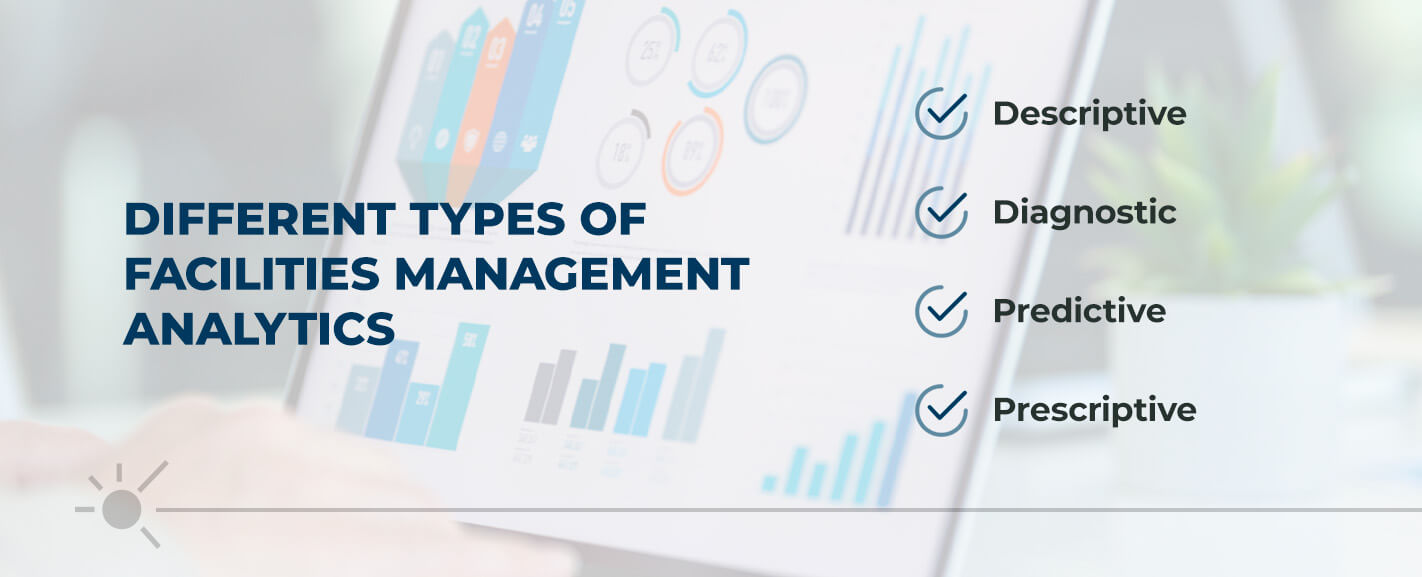
Your facility generates data every day. What are you using to capture this information in a digestible way and applying it to your decision-making processes? Enter an era of greater efficiency, productivity, and predictability by using data for facilities management.
What Is Facilities Management?
Facilities management deals with maintaining and improving the functionality, comfort, and safety of building space, grounds and infrastructure affecting the experience of visitors, customers, employees, or other relevant parties. These best practices involve several factors, including the following:
- Resource coordination
- Space use
- Delivery of support services
The people in your facility expect a supportive, comfortable experience. You can give this to them with proper facility management practices. But a lot must go on behind the scenes before facility users can benefit from your efforts. You need to understand the data behind your actions to deliver the best results for your facility and its users.
Benefits of Data-Driven Facilities Management
You can gain unprecedented positive results by transforming your facility management into analytic data. Here are some of the advantages of data-driven facilities management.
- Optimize your space: Whether you have teams of employees taking turns coming into the office or you want to ensure everyone has adequate room for their activities, data-driven facilities management can help you use your building’s space to its fullest potential.
- Enhance workplace experiences: By implementing data wisely, you can foster a productive and comfortable facility for employees, users, and customers alike.
- Easily manage maintenance and operations: Managing your operations and maintenance needs across several facilities can be challenging, but data-driven facilities management can simplify the job. Track your assets’ maintenance schedules, extending their useful life span in the process. Keep better tabs on your inventory, streamline cleaning schedules, and know when to perform maintenance.
- Gain valuable data insights: With the right data-driven facilities management solution, you can gather evidence-based analytics and insights to help you improve your daily operations and make actionable predictions.
- Increase safety: Data-driven facilities management can ensure your space is safe and follows all necessary regulations. Having a record of tracking your facility’s safety also keeps you accountable.
Why Collect Facilities Management Data?
Benchmarking your operations is the first step toward energy-efficiency. You need to review beneficial information about your facility and what goes on within it before making any changes. Facilities management data lets you quantify your workplace to get essential details to guide your decision-making.
With the data gathered through this process, you can confirm inefficiencies or discover new ones you were unaware of. Use the information to find operational strengths and build upon them. Then, you can test your hypotheses or create new ones to enhance your facility.
Different Types of Facilities Management Analytics

Managing large amounts of data from multiple sources requires analytics to turn your data into information. Analytical facility management can give you various pieces of helpful information for reaching your goals. Here are the four different analytics in data-driven facility management.
- Descriptive: Descriptive analytics highlight or describe a specific trend in your facility.
- Diagnostic: Diagnostic analytics can help you determine what is causing or driving revealed trends.
- Predictive: Predictive analytics forecast new trends and help you predict future occurrences.
- Prescriptive: Prescriptive analytics give you data-driven insight into how you can influence new trends for better, more desirable results.
By using each of the above analytics, you can make progress toward achieving better facility management outcomes.
Key Data Every Facility Manager Should Track
Many workplace data points can prove beneficial to your facility’s management. Here are five examples of metrics you can track to improve the effectiveness of your team, and support a comfortable and energy efficient facility.
- Work order response times: Discover how long it takes to complete work order requests using diagnostic analytics. Then, tap into prescriptive analytics to determine ways to improve your response times.
- Space occupancy levels: Data-driven management can reveal your facility’s max occupancy with descriptive analytics, giving you a better understanding of how to use your space and maximize your footprint.
- Maintenance schedules: Reactive maintenance puts you behind the curve of your assets’ repair needs. With analytical, data-driven insights, you can plan proactive maintenance to keep your assets working properly, extend their useful life, and decrease downtime.
- Cost per repair: Use descriptive analytics to determine your repair costs, which will help you plan your facility maintenance budget with greater accuracy.
- Energy usage: Energy is one of most facilities’ highest costs. Diagnostic analytics can help you determine what parts of your facility use the most energy. Use predictive and prescriptive analytics to find new ways to reduce costs and increase your facility’s energy efficiency.
Areas Where Data-Driven Facility Management Improves Internal Operations
The goal of data-driven facility management is to streamline operations and improve user experience. Here are some areas where this data can help you enhance internal processes.
- Equipment performance: You rely on your equipment daily. A data-driven facility management solution can give you insight into your essential equipment to ensure the best performance , and plan for its replacement.
- Energy usage: You want to reduce costs and make the most of the energy your facility uses. With data analytics, you can minimize wasted energy and maximize efficiency throughout your facility.
- Data sharing: Different people in your facility may need to work together for the best outcomes. You may also be managing several facilities at once. With streamlined data sharing, the appropriate data can go to the correct people for greater efficiency and accuracy.
- Automation: Combine your data-driven analytics with modern automation to ensure your facility stays adaptive and efficient across your operations.
- Proactive maintenance: Use data to stay ahead of malfunctions and costly repairs with preventive maintenance routines.
- Efficient asset management: Your facility has a lot of capital invested in its assets. Use the data you gather to ensure you are managing those as efficiently as possible.
- Labor management: Ensure employee schedules and activities can facilitate the best outcomes for them and your facility.
Learn More About mySiteIQ Data-Driven Facility Management Solution

If you are a facility owner, SitelogIQ has the data-driven facility management solution you need to experience all the benefits of using your data to your advantage and help make the decision-making process much easier. Make our mySiteIQ platform an essential part of your master facility plan through all of your facility stages, helping you streamline your long-term facility maintenance for the best possible results.
We serve various markets and industries and can deliver a solution perfectly fit for your facility’s needs. Contact us online to learn more about how our solutions can help you identify high-priority projects and manage multiple projects with different funding sources.


